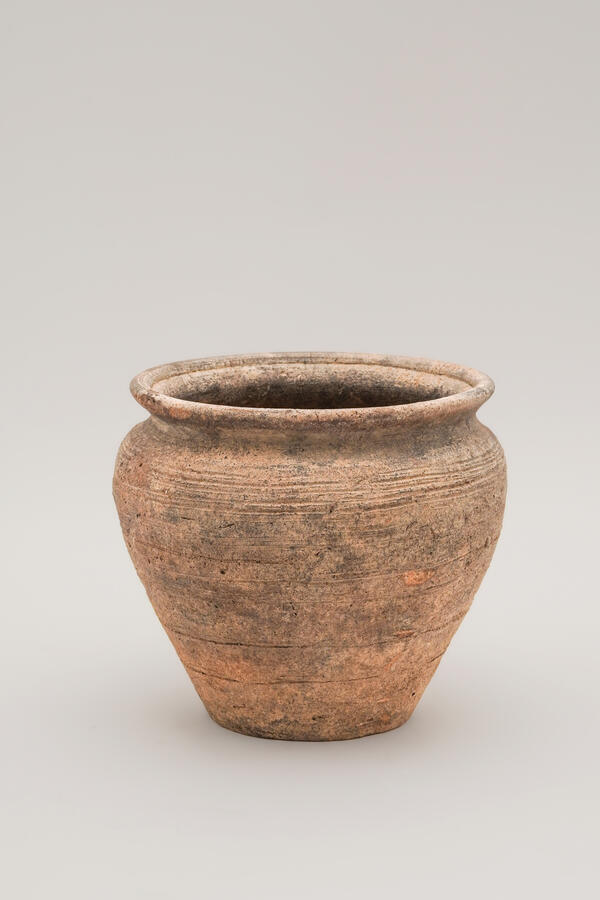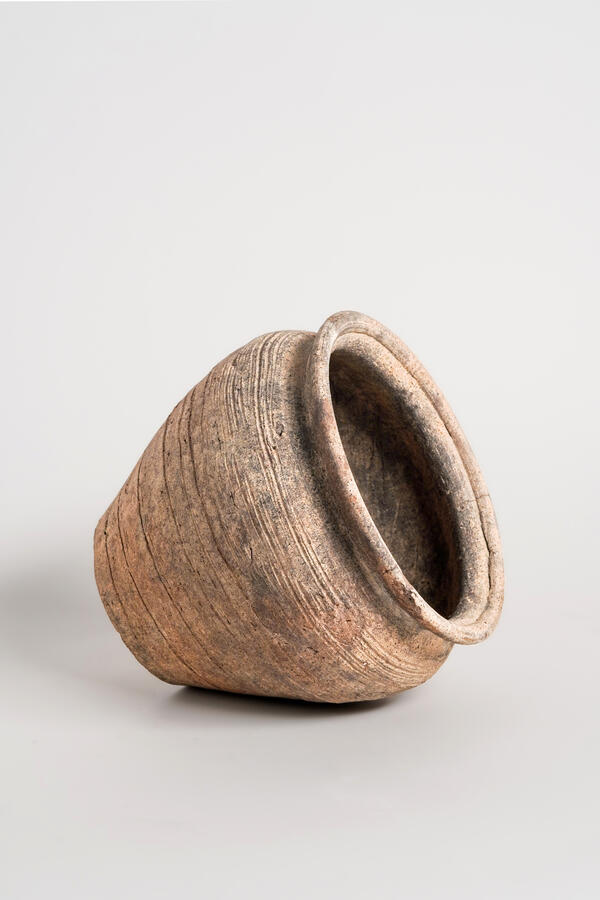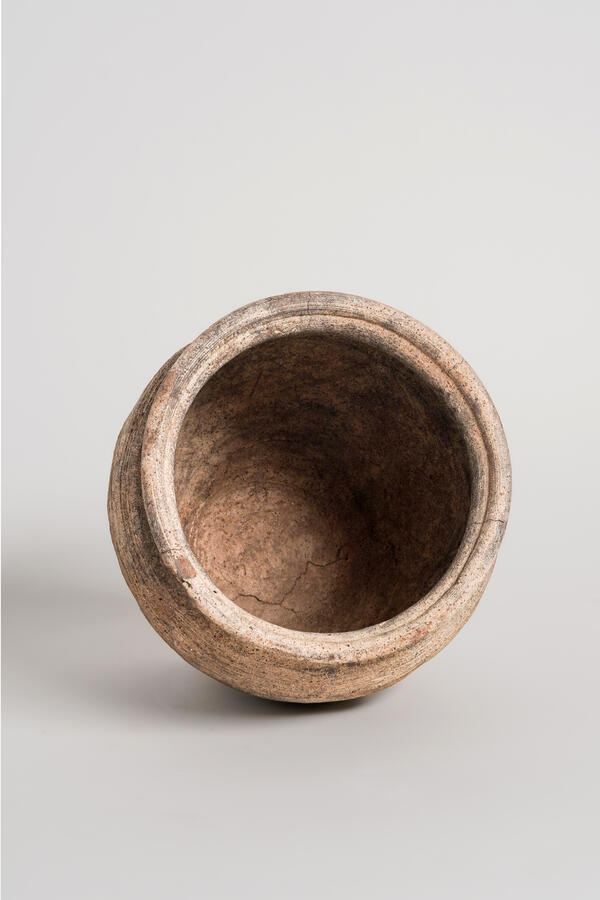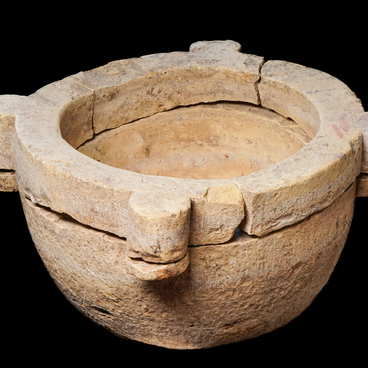Earthenware is a typical find in burial mounds containing objects which belong to different types of funerary rites. The pottery is most often found in mounds featuring traits of the inhumation rite (burying the whole body in the ground). The condition of the finds suggests that the pottery was part of the funerary rites at certain stages of the ceremony.
The arrangement of the vessels in the mounds suggests that there were several common functional groups of items. The first group includes pottery that was placed during the burial. The second group includes the vessels that was used at different stages of the funeral rite. The pottery of the second functional group was predominant.
Earthenware is a type of pottery. It is often made of gray clay with various admixtures. Granite sand, chamotte and mica were used as impurities. The dominant shape of vessels is the pot. This is a vessel with a wide open top, with a low rim and a round body, which smoothly tapers to the bottom. The most common are fragments of vessels with a rim that is bent outwards and thickened around the edge. It can come in different shapes: sometimes it hangs downwards, sometimes it has a rounded thickening. The neck is usually short. It is not uncommon to find rims that are pulled outward with a rounded curve inward. Pots with this kind of rim have a short neck.
Linear ornamentation was applied to the upper half of the vessel’s body while the lower third of the body was usually unornamented. Above the linear pattern there could be a band of oblique notches. The latter type of ornamentation is more typical for the 13th century. Curly pattern on pottery was common and was usually found in combination with linear pattern, which is typical of Old Russian pots of the 12th–13th centuries. The drawing was scribed on raw clay with a stick or several sticks, sometimes combined in a comb. Earthenware with a wavy “sea” pattern was widely used from approximately the late 12th century up to and including the 15th century. With some vessels the wavy motif was applied with a fork, which had a few prongs.
The arrangement of the vessels in the mounds suggests that there were several common functional groups of items. The first group includes pottery that was placed during the burial. The second group includes the vessels that was used at different stages of the funeral rite. The pottery of the second functional group was predominant.
Earthenware is a type of pottery. It is often made of gray clay with various admixtures. Granite sand, chamotte and mica were used as impurities. The dominant shape of vessels is the pot. This is a vessel with a wide open top, with a low rim and a round body, which smoothly tapers to the bottom. The most common are fragments of vessels with a rim that is bent outwards and thickened around the edge. It can come in different shapes: sometimes it hangs downwards, sometimes it has a rounded thickening. The neck is usually short. It is not uncommon to find rims that are pulled outward with a rounded curve inward. Pots with this kind of rim have a short neck.
Linear ornamentation was applied to the upper half of the vessel’s body while the lower third of the body was usually unornamented. Above the linear pattern there could be a band of oblique notches. The latter type of ornamentation is more typical for the 13th century. Curly pattern on pottery was common and was usually found in combination with linear pattern, which is typical of Old Russian pots of the 12th–13th centuries. The drawing was scribed on raw clay with a stick or several sticks, sometimes combined in a comb. Earthenware with a wavy “sea” pattern was widely used from approximately the late 12th century up to and including the 15th century. With some vessels the wavy motif was applied with a fork, which had a few prongs.





